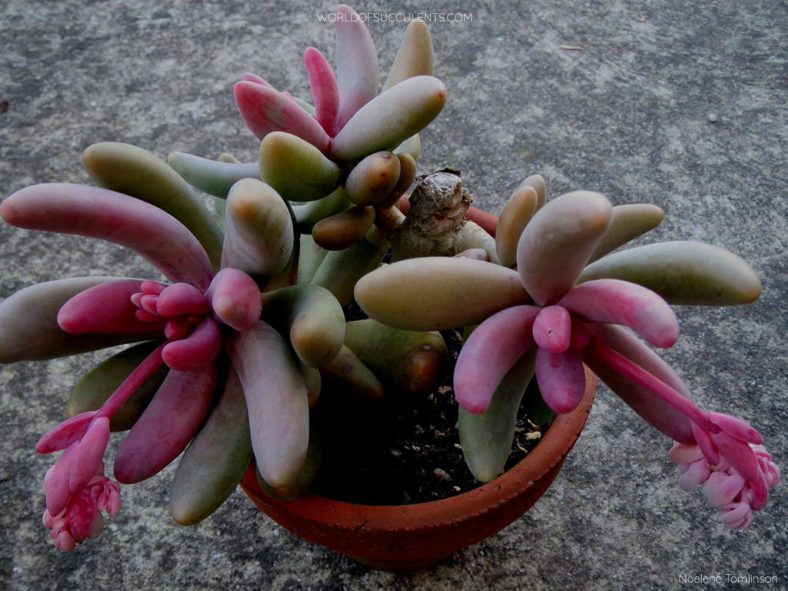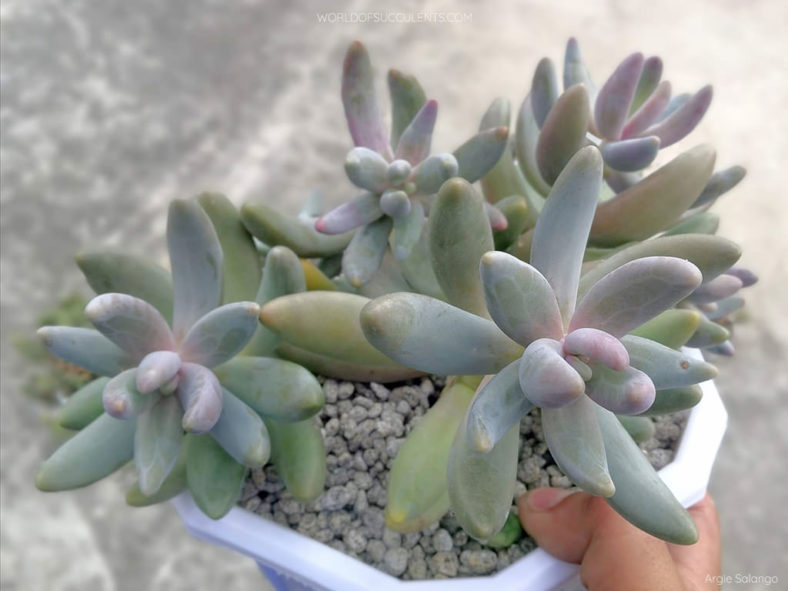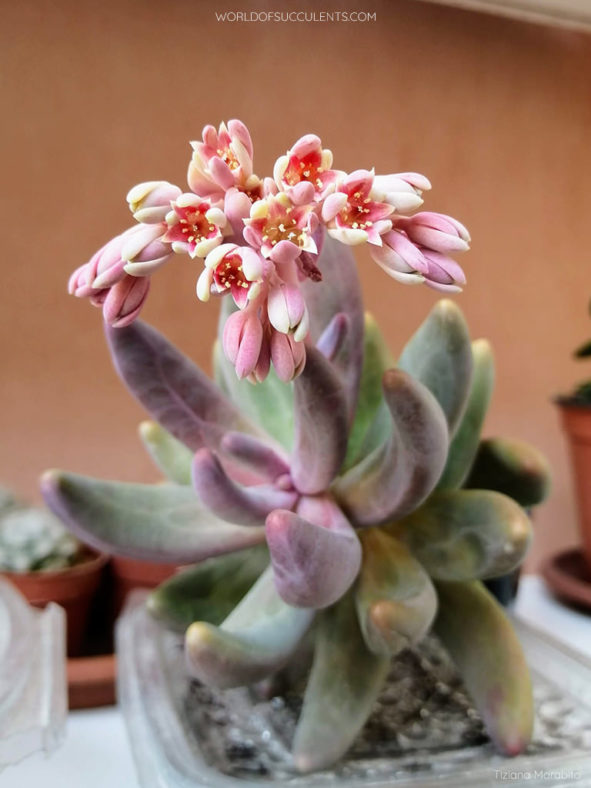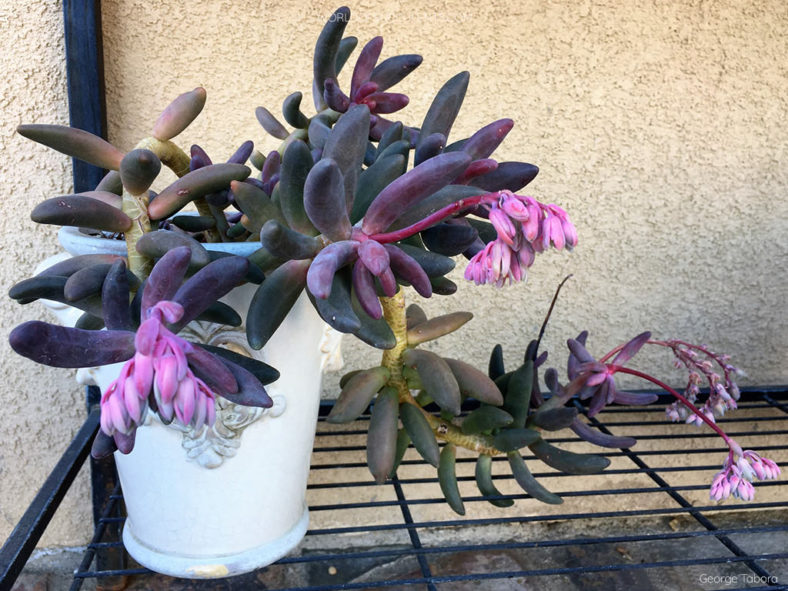Scientific Name
×Pachysedum 'Ganzhou'
Scientific Classification
Family: Crassulaceae
Subfamily: Sempervivoideae
Tribe: Sedeae
Nothogenus: ×Pachysedum
Origin
×Pachysedum 'Ganzhou' is an intergeneric hybrid possibly resulting from a cross between Pachyphytum viride and Sedum craigii.
Description
×Pachysedum 'Ganzhou' is a beautiful small succulent with stems branching from the base and bearing colorful, finger-like leaves with a powdery coating. The stems can grow over 10 inches (25 cm) long and 0.4 inches (1 cm) in diameter, bending downwards and sometimes with aerial roots. The leaves vary in color from pale pink to near magenta when young, becoming gray-green as they age. They can measure up to 2.5 inches (6.2 cm) long and 0.7 inches (1.7 cm) wide. At first, leaves are clustered in compact rosettes, later more or less distant, easily falling off and persistent only in the upper part of the stems.
The flowers are bell-shaped, with pink petals and sepals, the same color as the leaves, appressed at the petals. In spring, they appear in clusters in arching inflorescences.

How to Grow and Care for ×Pachysedum 'Ganzhou'
Light: If you want your ×Pachysedum 'Ganzhou' to thrive, it should be exposed to direct sunlight. The plant can grow in partial shade but with slightly rangy results. As a houseplant, keep it near a sunny window.
Soil: Good drainage is essential to keep this plant healthy. When growing it in a container, choose a well-drained soil mix and a container with drainage holes.
Temperature: ×Pachysedum 'Ganzhou' will do well in hot weather, but its most active growth will occur in spring and fall. It grows best in USDA Plant Hardiness Zones 10a to 11b, with average minimum winter temperatures ranging from 30 to 50 °F (-1.1 to 10 °C).
Watering: In spring and fall, water the plant thoroughly, but allow the soil to dry out before watering again. Water more sparingly in winter. During its summer dormancy, the plant does not need to be watered except in arid conditions.
Fertilizing: Apply fertilizer during the growing season to promote healthy growth and flower production. A water-soluble fertilizer diluted to half the recommended strength is suitable.
Repotting: ×Pachysedum 'Ganzhou' does not require frequent repotting. However, when the plant outgrows its container, repotting it in a new container with fresh soil will encourage new growth. Repot the plant in a pot slightly larger than the old one and give it a week or so to readjust before you water it.
Propagation: The easiest way to propagate ×Pachysedum 'Ganzhou' is through stem cuttings. It also easily propagates from leaf cuttings. Even a leaf that drops off the plant will root below the parent plant and produce a new one. The best time to take cuttings is spring.
Learn more at How to Grow and Care for Pachyphytum.
Toxicity of ×Pachysedum 'Ganzhou'
×Pachysedum 'Ganzhou' is generally non-toxic to humans and pets.
Links
- Back to nothogenus ×Pachysedum
- Succupedia: Browse succulents by Scientific Name, Common Name, Genus, Family, USDA Hardiness Zone, Origin, or cacti by Genus
Photo Gallery
Click on a photo to see a larger version.


